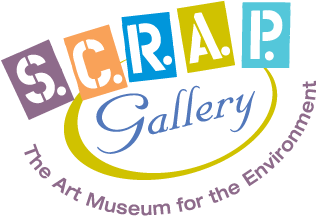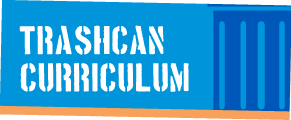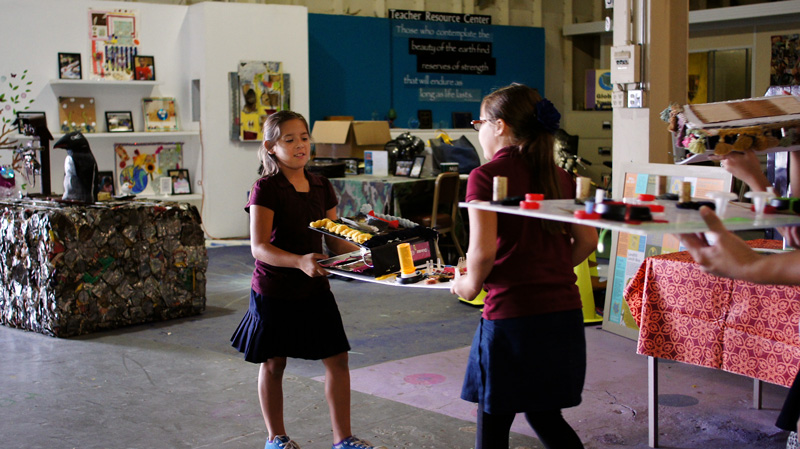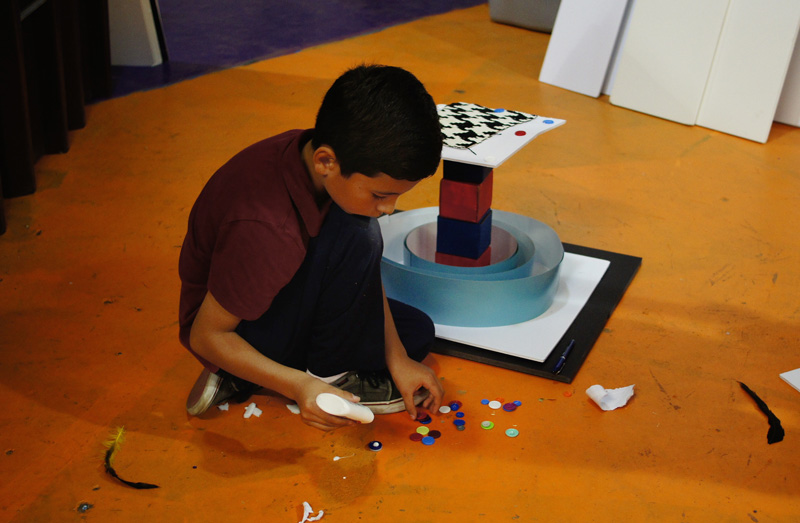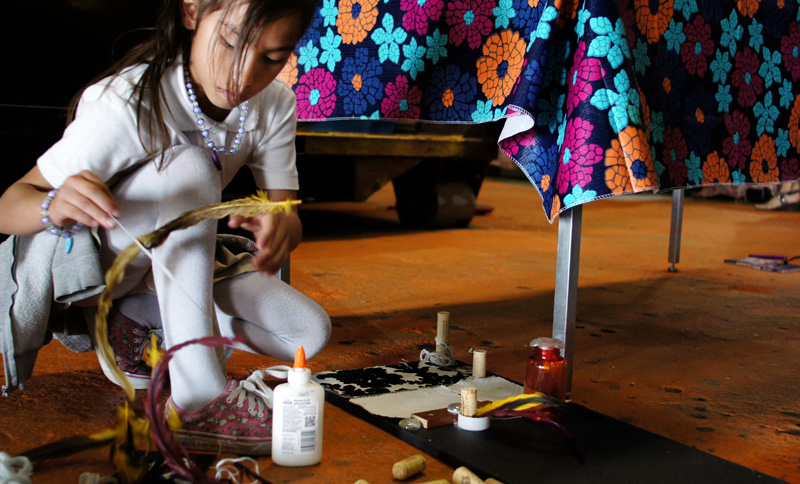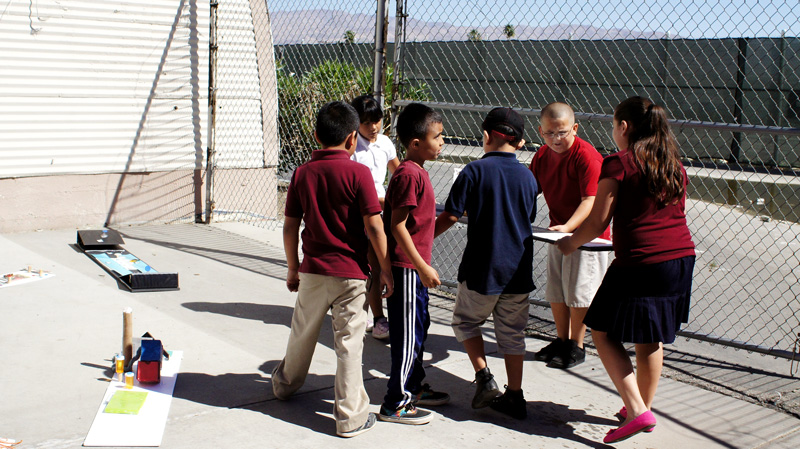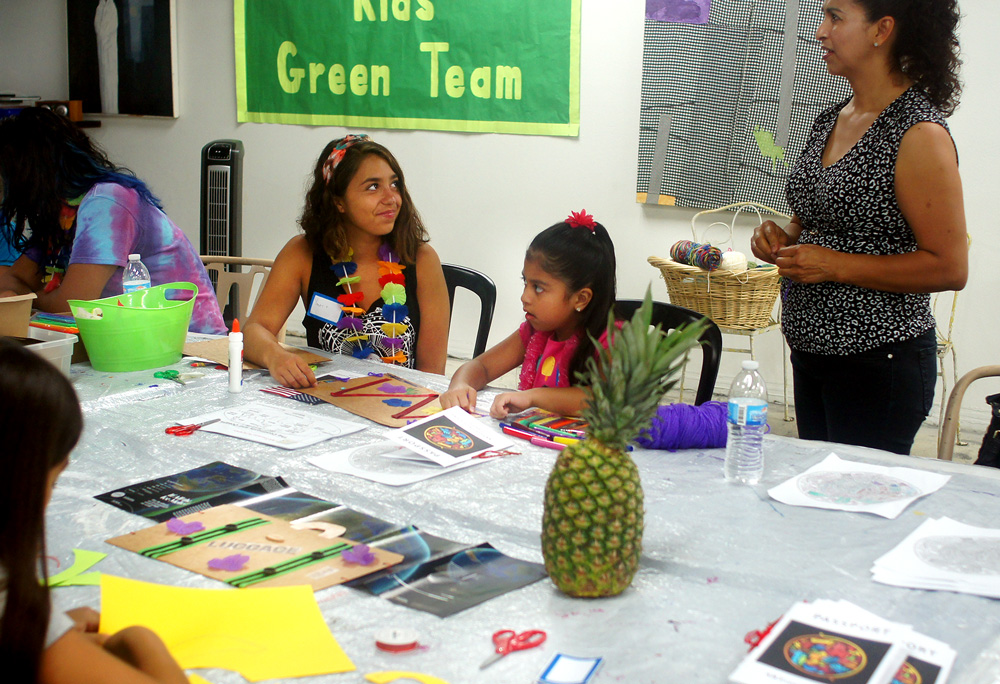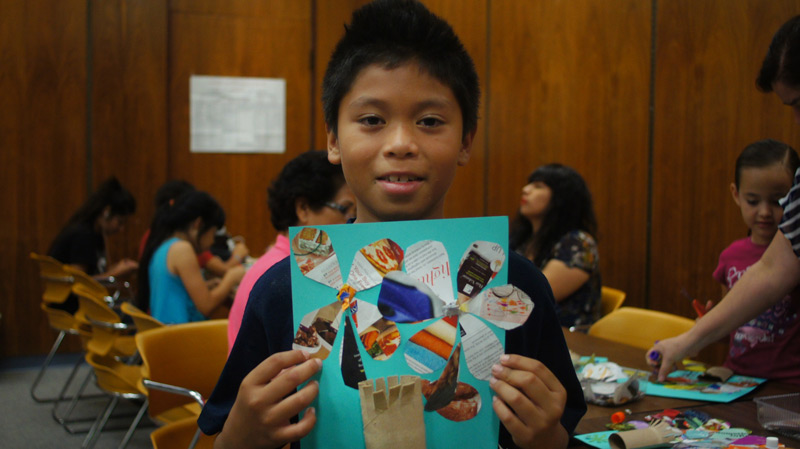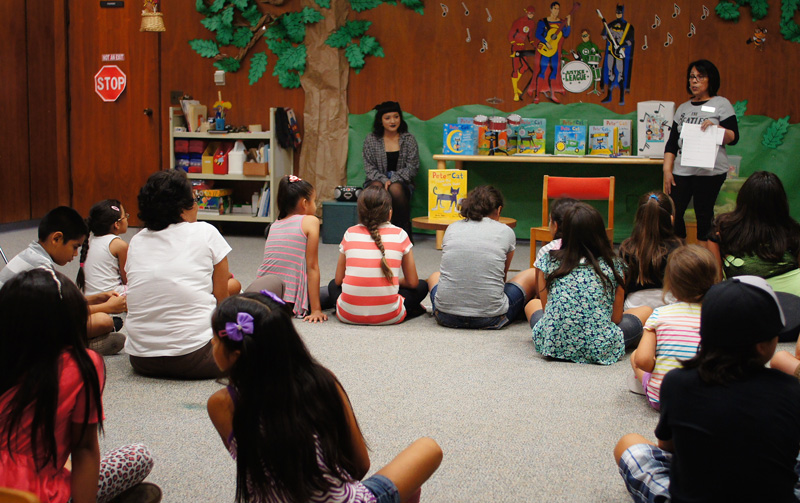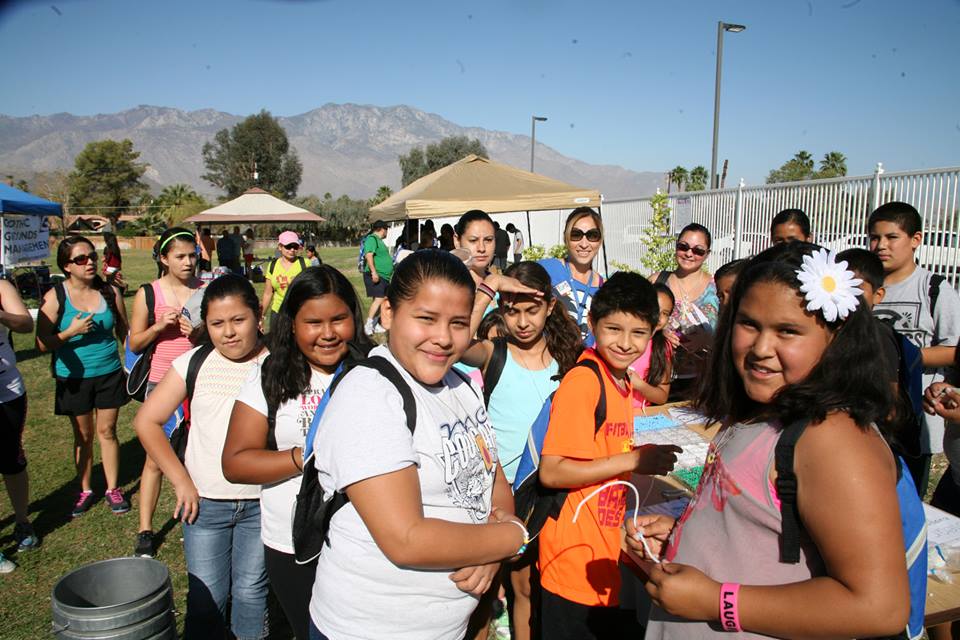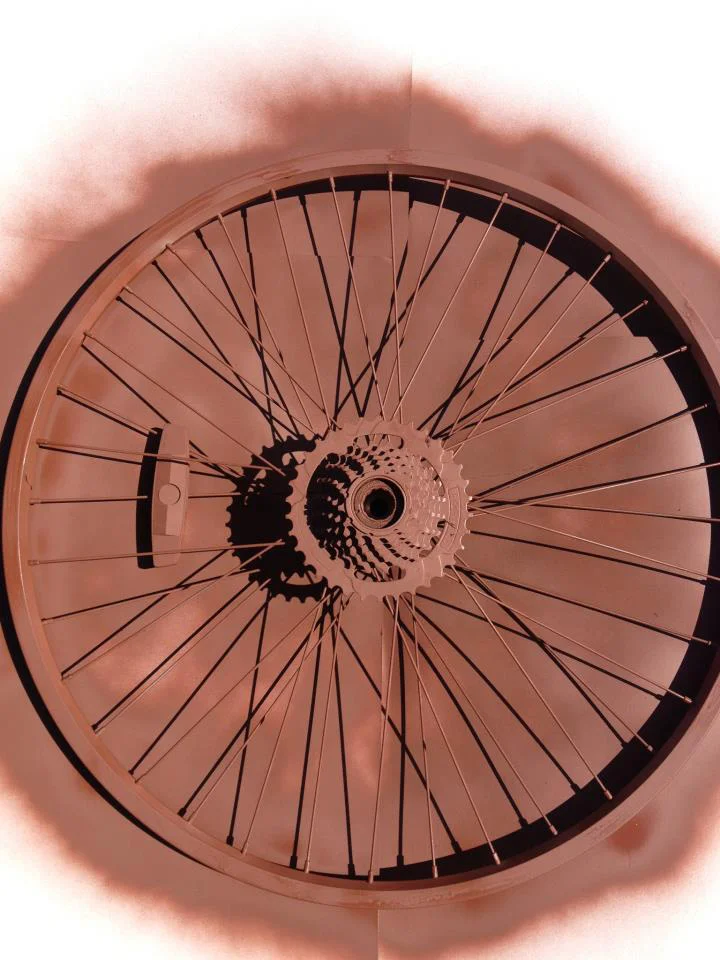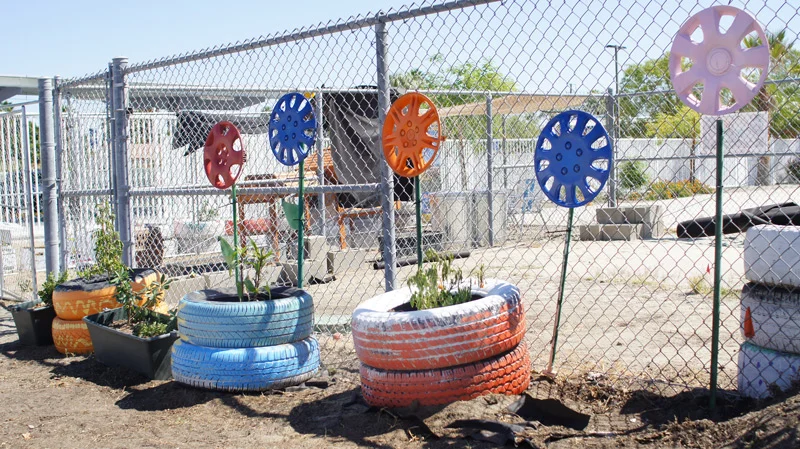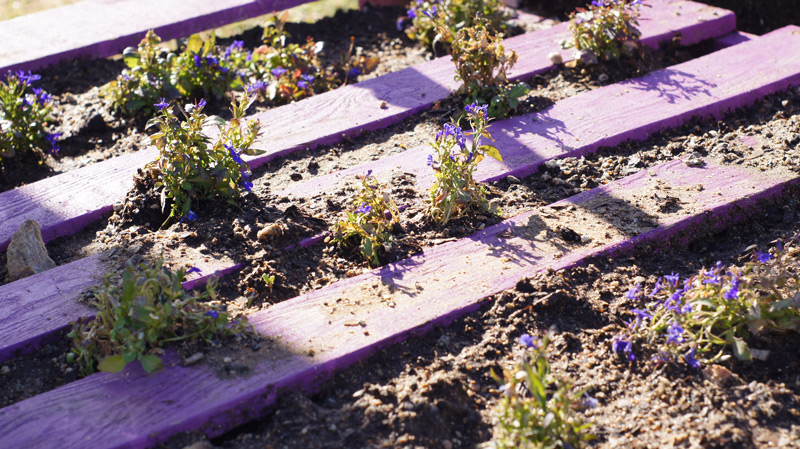““Someday, our children, and our children’s children, will look at us in the eye and they’ll ask us, did we do all that we could when we had the chance to deal with this problem and leave them a cleaner, safer, more stable world?””
Earth Day / Walking For Water 6K
As part of our annual Earth Day festivities and Global Youth Service Day in April, S.C.R.A.P. Gallery hosts the Walking For Water 6K. Walking for Water is a fundraising and awareness event where kids and adults walk 6 kilometers, carrying 6 liters of water in a backpack. That's just under 4 miles, and is the average distance that women and girls in developing countries must walk every day, typically carrying 20 liters (5.2 gallons) of water. By participating in the Walking for Water campaign, you can learn about local and global water issues and take action to improve the lives of other kids!
Trash Can Curriculum
How does the S.C.R.A.P. Gallery program and philosophy fit into the classroom experience? Check out one of our STEAM-designed Trash Can Curriculum units with environmental topics that engage students in integrated learning while exploring the world around them, creating innovative solutions to problems and sharing their outcomes while learning Science, Technology, Engineering, Art and Math.
Honu Tortuga Project
This is a cross cultural/environmental art project with students in the California Desert and on the Big Island of Hawaii. The project is intended to educate kids as well as adults about the way that turtles comprise a vital part of our global ecosystem. Students will be instrumental in communicating with their counterparts through written correspondence (language arts), sharing information and actively participating in habitat clean-ups in their own backyards. Using some of those materials collected will then be recycled and reused to create one-of-a-kind art pieces that weave environmental truths and tell an important story. The artwork will be gathered to produce a traveling exhibit that shown in California and Hawaii.
LandFill Lunchbox
Our signature publication that gets kids involved in taking trash and making art. This 32-page book features all kinds of upcycled art projects accompanied by environmental facts and figures. How long does it take a plastic milk jug to decompose at the landfill? Way too long – about 500 years. Learn what else you can do with it!
ArtVenture Academy
The world is a big place— full of adventures in art, culture and the environment. So travel the globe with our 6-week summer camp, sponsored by the S.C.R.A.P. Gallery and the Coachella Valley Art Center. Each week our adventure seekers “tour” the seven continents and participate in all kinds of worldly projects including drawing, painting, mixed-media, writing, and sculpture!
Good Cob, Bad Cob
You decide! What do you know about GMOs? This program invites fifth grade students to learn about Genetically Modified Organisms and their effect on the environment. Students will create related artwork as part of an annual exhibition at the S.C.R.A.P. Gallery.
Recycle Bicycles
Keep your wheels spinning literally and figuratively with Recycle Bicycles. This is an environmental art experience that invites kids, artists and local residents to create unique sculptures using non-functioning bikes and bike parts. These finished pieces “travel” around the Coachella Valley for fun and exhibition. To further spin those wheels, bikes, donated by local law enforcement agencies, that can be refurbished are given to kids as part of our Spin To Sustainability events in collaboration with the Riverside County Department of Health. At these outdoor events we teach kids how to fix bikes, coordinate bike routes and lessen their carbon footprint. We also get on those bikes and ride!
School to Fork
S.C.R.A.P. Gallery's School To Fork is a sustainable garden program for local schools where kids learn to grow what they eat and eat what they grow! We work with students and teachers to develop on site, drought tolerant gardens, from raised beds to keyhole gardens. Our goals are to establish a connection to nature and environmental stewardship incorporating the following principles:
- Sustainability
- Collaboration
- Responsibility
- Art
- Perspective
KIDS GREEN TEAM
Want to make a difference in our environment? Want to create a better world?
Then join S.C.R.A.P. Gallery’s Kids Green Team!
Kids Green Team has projects that you can do online or in your community. We give you the tools, ideas and resources to partner with the planet. Take a look!
Take the Kids Green Team Pledge (Print it out for all to see!)
What are you doing to help the environment? Let us know.
Blue Star Museums
Parents of young children tell us that they go together to museums to learn new things and have family time together,” said NEA Chairman Jane Chu. “Blue Star Museums helps them do both, by helping military families learn about the cultural resources in their communities, and offering a fun, high-quality experience that’s budget friendly as well as family friendly. We’re proud to help connect museums to military communities nationwide.”
“Blue Star Museums has grown into a nationally recognized program that service members and their families look forward to each year,” said Blue Star Families Chief Executive Officer Kathy Roth-Douquet. “It helps bring our local military and civilian communities together, and offers families fun and enriching activities in their home towns. We are thrilled with the continued growth of the program and the unparalleled opportunities it offers.”
This year, more than 2,000 (and counting) museums in all 50 states, the District of Columbia, Puerto Rico, and American Samoa are taking part in the initiative. Museums are welcome to join Blue Star Museums throughout the summer. The effort to recruit museums has involved partnerships with the American Alliance of Museums, the Association of Art Museum Directors, the Association of Children’s Museums, the American Association of State and Local History, and the Association of Science-Technology Centers. This year’s Blue Star Museums represent not just fine arts museums, but also science museums, history museums, nature centers, and dozens of children’s museums. Among this year’s new participants are the Museum of Contemporary Art in Jacksonville, Florida, the Duluth Children’s Museum in Minnesota, The Space Station Museum in Novato, California, and The Lyon Arboretum at the University of Hawai'i at Mānoa.
